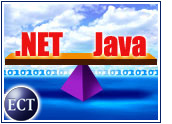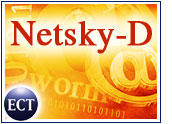
After years of legal wrangling, Sun Microsystems and Microsoft jointly announced that they have brokered a 10-year “technology collaboration” agreement, plus several related agreements — including a settlement of all pending legal issues between them.
“This agreement will be of significant benefit to both Sun and Microsoft customers,” Sun CEO Scott McNealy said. “It will stimulate new products, delivering great choices for customers who want to combine server products from multiple vendors and achieve seamless computing in a heterogeneous computing environment.”
As part of these agreements, Microsoft will pay Sun US$700 million to resolve extant antitrust litigation and another $900 million to resolve patent issues. Both companies also will pay each other royalties to use each other’s technologies. In that deal, Microsoft will make an up-front payment of $350 million, while Sun will start making payments as Microsoft technology is integrated into its server offerings.
A Surprise
Dana Gardner, senior analyst for application infrastructure and software platforms at the Yankee Group, told the E-Commerce Times that Friday’s announcement took him by surprise.
“It was very dramatic. If there had been some settlement one aspect, [such as] Java and Microsoft JVM (Java Virtual Machine), it would not have been a surprise, but the idea of McNealy and [Microsoft CEO Steve] Ballmer standing on the same stage is unexpected,” he said.
Gardner added that the agreement is good for Sun and Microsoft, end users and the industry in general. It also improves Microsoft’s image by showing that the company supports heterogeneity with competing vendors and that end users are not locked into its products.
“Our companies will continue to compete hard, but this agreement creates a new basis for cooperation that will benefit the customers of both companies,” Ballmer said. “This agreement recognizes that cutting-edge R&D and intellectual-property protection are the foundation for growth and success.”
Chocolate and Peanut Butter
According to their technology collaboration agreement, Sun and Microsoft will provide each other with access to portions of their respective server-based technologies, enabling them to develop new software that will integrate more seamlessly than before.
To achieve this goal, the two companies have agreed that Microsoft will continue to offer support for JVM, provide Windows certification for Sun Xeon and eventually Sun Opteron-based servers, and work closely to improve collaboration between Java and .NET technologies.
Gardner likened Microsoft’s and Sun’s cooperation to a Reese’s Peanut Butter Cup. “Wiring Windows and Java together is a thorny proposition,” he said. “Providing this binary integration is a cost saver and a productivity booster [because] it saves developers and architects of enterprise systems the tax of integrating Windows with the enterprise Java environment.”
Facing Reality
Sun also announced Friday its preliminary third-quarter results, saying it expects a net loss of between 23 and 25 cents per share. Additionally, the company revealed plans to eliminate 3,300 people from its workforce.
Gardner said Sun would have been less disposed to make such bold moves with Microsoft if it were not against the wall. During the joint press conference Friday, Sun disclosed that it had approached Microsoft about pursuing the agreements.
Additionally, Meta Group senior program director Thomas Murphy told the E-Commerce Times that Sun’s decision to elevate Jonathan Schwartz, formerly executive vice president of software, to the posts of president and COO indicates how important the company believes software is at this point in time.
Schwartz’s promotion “emphasizes to the world that Sun believes the ability to manage an interoperable software stack is critical to its future,” Murphy said. “Schwartz has shown that he is not only able to generate good innovative ideas, he can execute the massive changes Sun needs to make.”

























































Social Media
See all Social Media